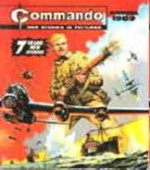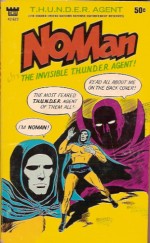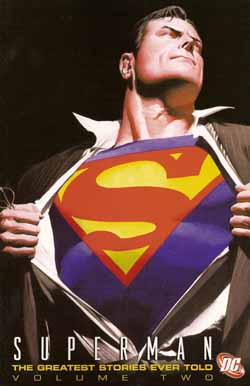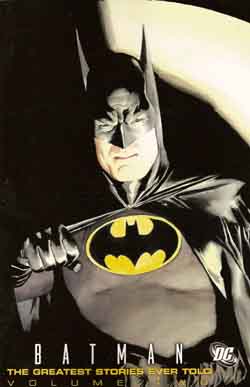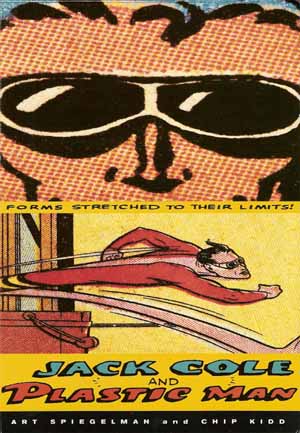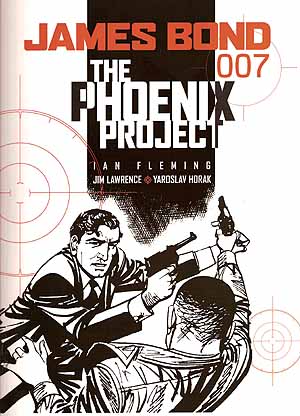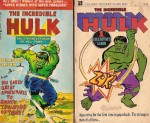
By Stan Lee, Jack Kirby, Steve Ditko & various (Lancer US/Four Square UK)
“ISBNs†72-124 (Lancer) and 1808 (Four Square)
This is one solely for chronic nostalgics, consumed collectors and historical nit-pickers, and is all about memories and the purity of the line – and possibly nasty, mean profiteering publishers…
One thing you could never accuse entrepreneurial maestro Stan Lee of was reticence, especially in promoting his burgeoning line of superstars. In the 1960s most adults, including the people who worked in the field, considered comic-books a ghetto. Some disguised their identities whilst others were “just there until they caught a break.†Stan, Jack and Steve had another idea – change the perception.
Whilst Kirby and Ditko pursued his imagination waiting for the quality of the work to be noticed, Stan pursued every opportunity to break down the ghetto walls; college lecture tours, animated shows (of frankly dubious quality at the start, but always improving), foreign franchising and of course getting their product onto “real†bookshelves in real book shops.
There had been a revolution in popular fiction during the 1950s with a huge expansion of cheap paperback books: companies developed extensive genre niche-markets, such as war, western, romance, science-fiction and fantasy. Hungry for product for their cheap ubiquitous lines, many old novels and short stories collections were republished, introducing a new generation to such authors as Robert E. Howard, Otis Adelbert Kline, H.P. Lovecraft, August Derleth and many others.
The paperback itself was not new: pioneered by German company Albatross Books in 1931 – not too long before the birth of the comic book itself – their abortive efforts were picked up and successfully adapted by publisher Allen Lane in England. In 1935 they launched Penguin Books, which in one go combined conspicuous, memorable design, genre-coding, brand awareness and product collectability in ten distinctive reprinted titles. The revolution had begun…
They were cheap, throwaway books – one could even buy them at Woolworth’s of all places, my dear! – and after some initial resistance the market grew hugely. The hoi-polloi could now afford to read anything they pleased. In America Robert de Graf linked up with Simon & Shuster in 1939 to create the remarkably similar Pocket Books line.
The war slowed everything down by rationing paper, but also increased the acceptance of these easily portable diversions, and by the end of the affair a number of powerful reprint publishers were dominating the cheap end of the US market: Ace, Avon, Bantam, Dell – and yes, most of those companies dabbled in comic-books too…
That market changed forever in 1950 when comics and magazine publisher Fawcett established Gold Medal Books and began publishing original works in softcover.
They were so successful that they severely wounded the entire magazine market and actually killed “the Pulpsâ€.
The hunger for escapist fiction was insatiable. Bantam Books had specialised in superhero fiction since 1964 when they began reprinting the earliest pulp adventures of Doc Savage, and they seemed the ideal partner when Marvel on the back of the “Batmania†craze, began a short-lived attempt to “novelise†their comic book stable with The Avengers Battle the Earth-Wrecker and Captain America in the Great Gold Steal.
Far more successful were various publisher’s repackaging of their actual comics stories in cheap and cheerful softcovers: Archie produced the memorable High Camp Superheroes, Tower collected the adventures of their big two Dynamo and No-Man, DC (then National Periodical Publications) released a number of Batman books and an impressive compendium of Superman stories and Marvel, punching far above their weight, unleashed a storm of paperbacks featuring a huge number of their new stars, Fantastic Four, Spider-Man, Daredevil, Thor and of course the Incredible Hulk.
Now during the heady, turbulent Sixties pulp heroics seemingly returned: imaginative “Thud and Blunder†fantasy tales that were the epitome of “coolâ€, and Marvel’s canny pursuit of foreign markets instantly paid big dividends.
Their characters, creators and stories were very familiar to British readers, appearing both in Odhams‘ weekly comics Wham!, Pow!, Smash!, Fantastic and Terrific, but also – since 1959 – in the black and white monthly anthologies published by Alan Class…
So when Lancer began releasing Marvel’s Mightiest early adventures in potent and portable little collections it was simple to negotiate British editions for those editions.
A word about artwork here: modern comics are almost universally full-coloured in Britain and America, but for over a century black and white was the only real choice for most mass market publishers – additional (colour) plates being just too expensive for shoe-string operations to indulge in. Even the colour of 1960s comics was cheap and primitive, and solid black line, expertly applied by master artists, was the very life-force of sequential narrative.
These days computer enhanced art can hide a multitude of weaknesses – if not actual pictorial sins – but back then companies lived or died on the draughting skills of their artists: so even in basic black and white – and the printing of paperbacks was as basic as the accountants and bean-counters could get it – the Kirby’s and Ditko’s and Wally Wood’s of the industry exploded out of those little pages and electrified the readership. I can’t see that happening with many modern artists deprived of their slick paper and 16 million colour palettes…
One word of warning to potential readers and collectors of these books: the US and UK editions can vary significantly – which is why I’ve selected the Incredible Hulk for this review. The American Lancer edition with the Kirby cover, published in 1966, represents in truncated, resized form two stories from The Incredible Hulk #3 (September 1962)‘Banished to Outer Space’ which radically altered the relationship the monster and his teen sidekick Rick Jones, and the first appearance of the Circus of Crime in ‘The Ringmaster’, by Lee Kirby and Dick Ayers, and then jumps via a brief bridging sequence from The Incredible Hulk #6 (March 1963) to the Steve Ditko run from Tales to Astonish.
These are ‘The Incredible Hulk’ (Tales to Astonish #60, October 1964) by Lee, Steve Ditko and comics veteran George Roussos – under the pseudonym George Bell – which found Bruce Banner still working for General “Thunderbolt†Ross, and still afflicted with uncontrollable transformations into a rampaging, if well-intentioned, engine of destruction. The episodes were set in the Arizona/New Mexico deserts, with Cold War espionage and military themes as the narrative backdrop…
This is followed by ‘Captured at Last’ the concluding part of a battle with a spy in an indestructible battle suit, and then the Hulk’s greatest foe is introduced in ‘Enter… the Chameleon’ (not him but his boss and taken from TtA #62): stuffed with action and suspense but the real stinger is the final panel that hints at the mastermind behind all the spying and skulduggery – the enigmatic Leader – who would become the Hulk’s ultimate and antithetical nemesis.
Thus far this book and the UK Four Square paperback released in 1967 are all but identical – covers excluded of course – and apart from a Kirby pin-up page and ads for the Thor, Spider-Man and Fantastic Four companion volumes, that’s where Britain’s Hulk stops dead, whereas the Lancer volume has another full episode to go.
‘A Titan Rides the Train!’ provides an origin for the super-intellectual Leader as well as setting up a plotline where new cast member Major Glen Talbot begins to suspect Banner of being a traitor. Both editions end on frustrating cliffhangers but at least you get one more astonishing tale in the Lancer book.
Nowadays all these adventures are readily available (in colour in the Marvel Masterworks: Incredible Hulk 1962-1964 or as dynamic monochrome treasures in Essential Hulk) but for we surviving baby-boomers the sheer thrill of experiencing these books again is a buzz you can’t beat. Moreover there’s still something vaguely subversive about seeing comics in proper book form, as opposed to the widely available, larger and more socially acceptable graphic novels. Strip art might finally be winning the war for mainstream public recognition, but we’ve all lost some indefinable unifying camaraderie of outsider-hood along the way…
These paperbacks and all the others are still there to be found by those who want to own the artifact as well as the material: I suspect that whether you revere the message or the medium that carries it pretty much defines who you are and how you view comics and the world.
Wanna try and guess where I stand, True Believer…?
© 1966 and 1967 the Marvel Comics Group. All Rights Reserved.


